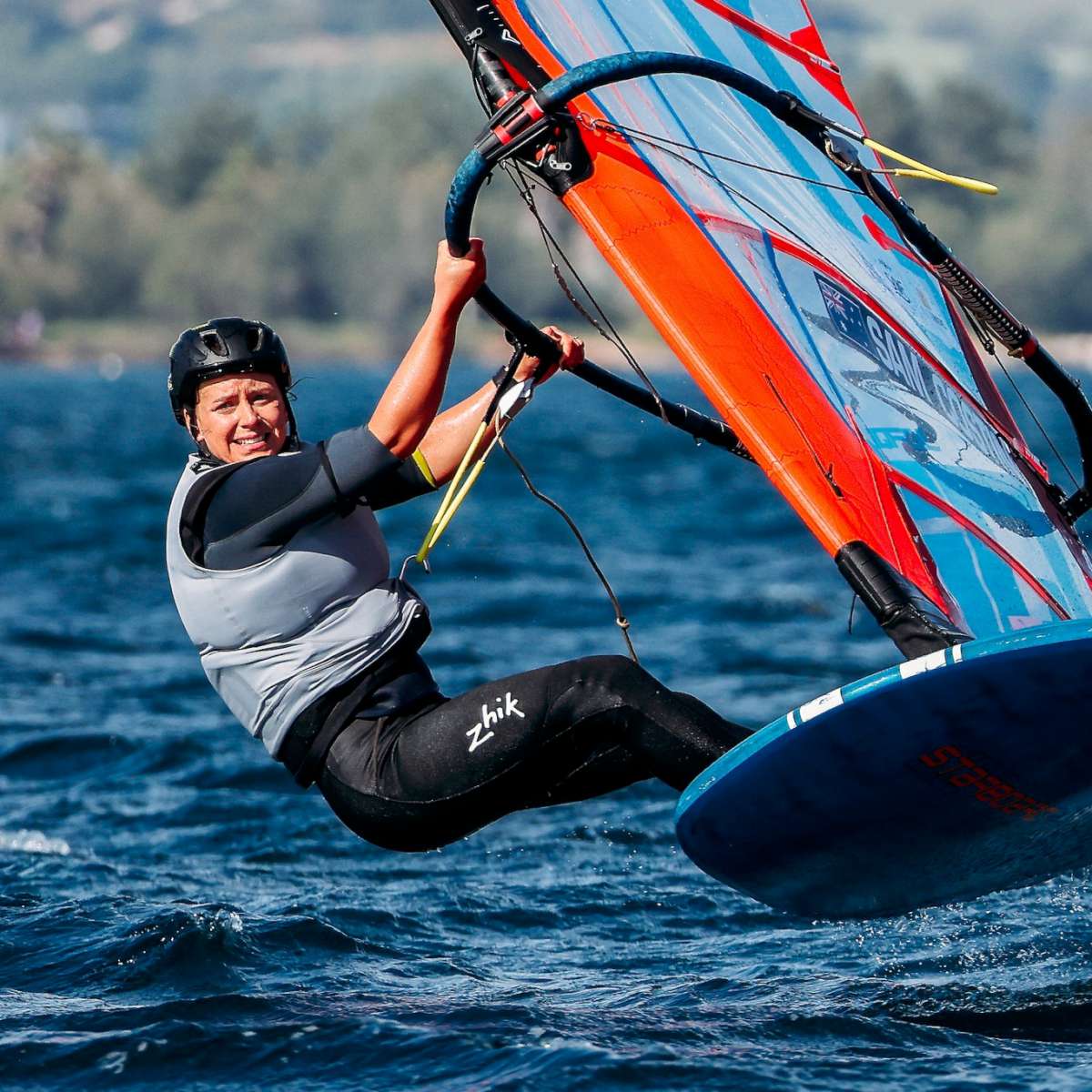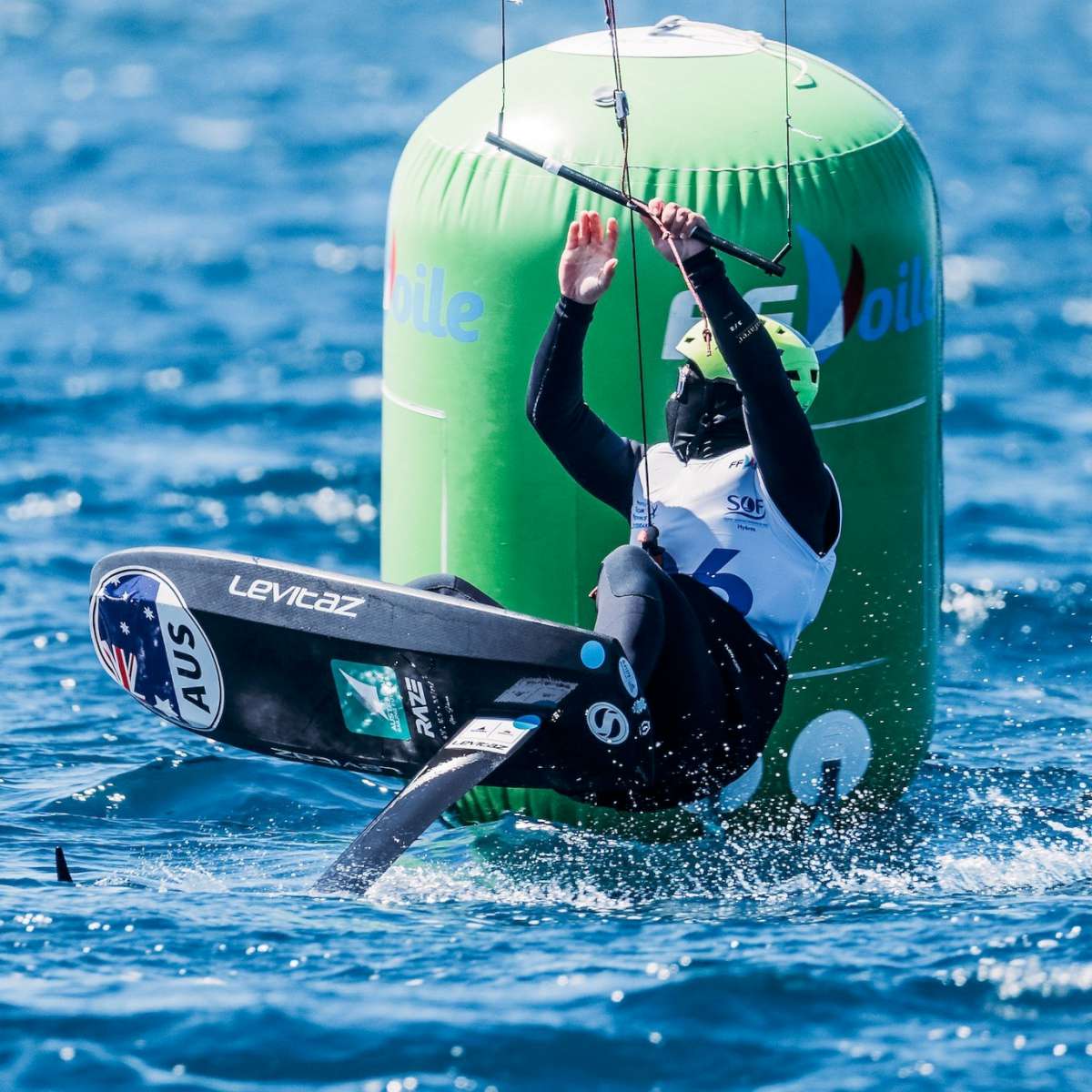AUSTRALIAN 18 FOOTERS LEAGUE
An incredible club in a league of its own
As the Australian 18 Footers League prepares to celebrate its 90th birthday of 18 footer racing on Sydney Harbour in February 2025, it’s an ideal opportunity to take a look at some of the highlights the club has achieved and promoted along the way.
The Sydney Flying Squadron had conducted 18 footer races on Sydney Harbour since the 1890s, but early in the 1930s Queensland developed a new style 18, named Aberdare, which revolutionised the class and reduced the crew size from 12 or 13 on the older boats to seven on Aberdare.
Sydney sailors immediately wanted to build similar boats but the SFS refused to accept the new type boat and closed its register.
Late in 1934, the SFS decided to terminate its agreement with the Brisbane 18 Footers Sailing Club and announced its withdrawal from the 1934-35 Australian Championship.
The former SFS President, James J. Giltinan, held a meeting of the unhappy Sydney sailors at the NSW Rugby League’s Club to ensure the future of the Australian Championships and, following the meeting, the resulting NSW 18 Footers Sailing League announced that it had made an agreement with the Brisbane 18 Footers Sailing Club to stage the 1934-35 Australian Championship as its first event on Sydney Harbour.
The new club’s first race was the first heat of the 1934-35 Australian Championship on February 3, 1935 and was an unqualified success, giving the new organisation the confidence to move forward to secure its future.
The club decided to stage its races each Sunday, leaving the SFS to continue to hold their races each Saturday. This was a ‘master stroke’ as all other sporting events at the time were being staged on a Saturday. Sydney sports enthusiasts, who had previously had nothing to support on Sundays, quickly accepted the new event and spectator ferries carried large crowds each Sunday.
Six new style boats, Minnawatta, All British, Alruth, Dee Why, HC Press V and Lois, were built for the League’s first full season in 1935-36, then a further five, Jean, Collaroy, Burrawang, Lightning and Australia II, followed in 1936-37. Attendances were unprecedented and up to seven ferries were hired each Sunday to accommodate the crowds.
The entrepreneurial skills of James J. Giltinan, then the League’s first President, were evident at the beginning of the 1936-37 season when each crew carried a jockey in the boat. It was reported that the move attracted non-sailing punters onto the water and “more than 4000 people watched the race.”
Smart marketing plus being able to follow an exciting sport each Sunday was obviously a winning formula and it also brought an added bonus of attracting the horse racing fraternity who wanted to have a bet on Sunday, which had previously been unavailable to them. The club claimed a total attendance of 58,469 people for its fifteen races that season.
In 1937, Mr Giltinan sent letters of invitation to interested parties in England, USA, China and New Zealand to compete in a series of races on Sydney Harbour, named the World’s 18 footers Championship, to celebrate the 150th Anniversary of New South Wales in 1938. Only New Zealand finally accepted the invitation and sent a team of four boats to compete against four Queenslanders and twelve from the League’s fleet.
It was hardly surprising that there was a significant difference in the two types of boats competing at the championship as New Zealand only had only two classes of 18 footers racing at the time, which were the V-class and M-class. Practically the only thing the Australian and New Zealand boats had in common was the length of the hull.
The original World Championship regatta was a huge success, which The Sydney Morning Herald newspaper described on the day following the first race: “The grip that 18 footer sailing has on the Sydney community was clearly demonstrated yesterday when a record crowd watched Taree win the first heat of the world championship on the harbour.”
“The crowd at Circular Quay was so large that extra steamer accommodation had to be provided at the last moment, while craft of almost every conceivable description were in attendance. The foreshores, particularly Bradley’s Head and Steel Point, were thronged with spectators.”
The amazing success of the League and the championship is best summed up by League President Horwitz’s statement at the beginning of the 1938-39 season: “There can be no doubt that the modern type 18 footer appeals to the sporting instincts of every Australian as is evidenced by the fact that our patrons increase in numbers as each season progresses. Two seasons ago we felt proud of being able to record 150,000 patrons for the season. Last season (1937-38) we were just under the 200,000 mark.”
It wasn’t all just about sailing races for the club’s early administrators and by 1936 they had inaugurated a competition to raise funds for the Royal Alexandra Hospital for Children, and to achieve their goal, a decision was made early in 1937 to stage a Queen of the Waves competition each year.
The aim was to use the proceeds from the competition “to build a school at the hospital to have crippled children transported from their homes to the hospital, receive treatment and education, and then taken back home each day.”
Co-operation of both individuals and businesses helped the scheme to get off to a successful start. Candidates looking to achieve the honour of being named the ‘Queen’ raised more than $6,000 and plans were made to build the school at the hospital. Unfortunately, due to the world unrest at the time, activities were curtailed and the $6,000 was handed to the hospital as a trust fund.
Later, hospital authorities decided to build the school with other funds and suggested that a wing of the school be named after the club. The League weren’t happy about that arrangement as the donations by members were made specifically for the purpose of building the school. But agreement was finally reached for the club to use its funds to take over a ward at the hospital, have it renovated, and use it for in-patients on nearly the same lines as the club had originally intended.
The incredible success of the competition in those early days of the League was published in the club’s 1972-73 Annual Report: “The total amount donated to the hospital from 1937 to the present (1972) has reached $58,434. Add to this the amount the sum of $6,560 raised from the Ladies’ Committee by competitions on the Official Ferry and other ferries, and donated to the hospital, making the grand total of $64,994.”
The club also donated a virus laboratory microscope and microsurgical instruments, tissue processing apparatus as well as other instruments and sundry items.
Despite the success of the League’s racing over the years, it had remained ‘homeless’ since its formation in 1935.
The committee, in the late-1950s, saw an opportunity to purchase the Ireland’s Boat Shed, which was located on the site of the present clubhouse, but soon realised that the club didn’t have enough money to secure the purchase.
The opportunity appeared to be lost, before one of the skippers in the club’s fleet, Alf Beashel, made an incredible gesture which changed the situation and enabled the League to secure the site for its future clubhouse.
Alf Beashel, who was a draftsman, decided to retire prematurely and put his superannuation money into securing the purchase on behalf of the League.
With the site secured and the clubhouse operational from 1961, Alf Beashel became the Secretary and actively promoted the 18ft Skiffs to both the United Kingdom and USA, in the late-1960s- early 1970s, prior to his death in 1978.
In January 1985, the League administrators produced another outstanding success when they celebrated the club’s 50th Anniversary by staging a unique event which, as its finale, had one of the most spectacular 18ft Skiff races in the sport’s history.
The regatta, the ‘Gold Cup’, was conducted over two weekends, and carried prizemoney of $7,500 as well as a gold cup to the winner. There were seven races in the event; the first six races were sailed over specially designed courses on Sydney Harbour. The final race, The Ocean Challenge, was the highlight of the series.
With $2,000 prizemoney up-for-grabs in the race, 19 boats lined up for the Le Mans-style start on the Pittwater side of Palm Beach. Skippers had to run to their boats, which were being held ready by the other two crew members, sail around the Palm Beach headland, go to sea, then head south along the shoreline to the ‘Heads’ at the opening to Sydney Harbour.
Once inside the harbour, the 18s had to race to the finish line, which was positioned east of the Sydney Opera House. It was the first ocean-going 18ft Skiff race ever staged in Sydney and came with all the fanfare expected from such a unique contest.
Sponsored by the NSW Government’s State Bank, the start followed a spectacular air display over the waters at Palm Beach. Local television covered the festivities with pre-race interviews, then helicopter coverage as the skiffs raced down the coast, over the 26-mile course, and down Sydney Harbour to the finish line.
Remarkably, after 1hr43m15s and 26 miles of top speed racing down the coast, Chesty Bond’s crew grabbed the honours by just 1sec from the reigning world champion, Tia Maria.
By the late 1980s, when the clubhouse was beginning to show its age, the Board of Directors began a rebuild program, which ultimately became a reality in 1991 and produced the current premises.
Around the same time, the club’s fleet numbers were under pressure from the rising costs associated with most highly competitive sports, but once again pro-active administration took the initiative and introduced a set of rules which reduced the costs, revolutionised and expanded the iconic 18s to the world and produced results that James J. Giltinan could have only dreamed about in the 1930s.
Prior to the rule changes, apart from Australia, only seven New Zealand teams were winners at the 42 Giltinan world championship regattas which had been conducted to 1993. There had been no winners from any of the other seven competing countries to that time.
Thirty one years later, there have now been another seven non-Australian winners (two from UK, two from USA and three from New Zealand) and the number of challenging countries has now reached twenty-one.
The most recent innovation from the League has been the introduction and incredible development of the video coverage of the club’s racing.
In the early 2000s, current Club President, John ‘Woody’ Winning, along with the late Bob ‘Killo’ Killick, had the vision of presenting 18ft Skiff Racing on Sydney Harbour to the world. In 2024 there is a livestream broadcast, from the race course, video coverage of every 18 footer race on Sydney Harbour each summer.
With the 90th anniversary of the club’s first race now just six months away, the club’s current administration team are planning a two-day celebration, over the week-end of February 1-2, 2025, to celebrate the occasion.
The Australian 18 Footer League’s plans are expected to be announced in the near future.
…
Frank Quealey
Australian 18 Footers League Ltd.
Facebook: @18footers @sailmedia
Instagram: @18skiff @sail.media







































